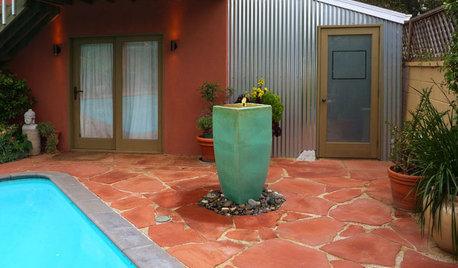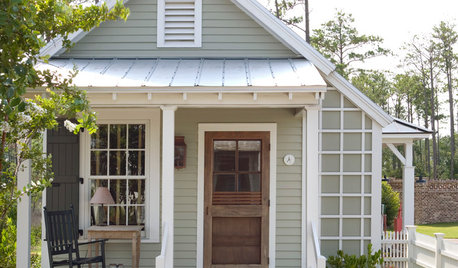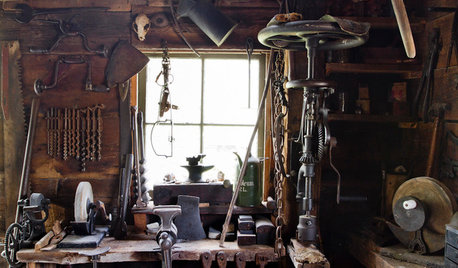This welder is really different...
kbeitz
19 years ago
Related Stories

HOUZZ TVHouzz TV: Cool Reclaimed Wood Projects Fill a Craftsman’s Home
Using barn wood, beadboard and beams, this homeowner has crafted furnishings and features for his family’s Chicago home
Full Story
HOUZZ TOURSMy Houzz: 2 Dwellings Keep Things All in the Family
Grandparents get a newly built guest cottage in Portland, while the main bungalow benefits from a major overhaul
Full Story
ARTAt Home With Art: Suspended Sculptures Heighten the Possibilities
Draw the eye in unexpected ways with 3D artwork hung from above
Full Story
BEFORE AND AFTERSMore Room, Please: 5 Spectacularly Converted Garages
Design — and the desire for more space — turns humble garages into gracious living rooms
Full Story
MOVINGHow to Avoid Paying Too Much for a House
Use the power of comps to gauge a home’s affordability and submit the right bid
Full Story
MATERIALSAre You a Maker? Show Us Your Favorite Tool or Material
Houzz Call: A tool or material can be a maker’s best friend. We’d like to see your favorite — and what it helps you achieve
Full Story
BEFORE AND AFTERSKitchen Rehab: Don’t Nix It, Fix It
A small makeover makes a big impact in a traditional kitchen in Atlanta with great bones
Full Story
FARM YOUR YARDHouzz Call: Show Us Your One-of-a-Kind Chicken Coops
Do you have a fun or stylish backyard shelter for your feathered friends? Post your pictures and stories in the Comments!
Full Story
FENCES AND GATESA Designer Uses PVC Pipe to Cast a Modern Garden Gate
Landscape designer Scot Eckley walks us through the process of creating a custom aluminum ring gate
Full Story
THE HARDWORKING HOMEHow to Design a Marvelous Mudroom
Architects and designers tell us how to set up one of the toughest rooms in the house
Full Story
Sponsored






john_in_ma
kbeitzOriginal Author
Related Professionals
Newnan Furniture & Accessories · Scottsdale Furniture & Accessories · Carpinteria Furniture & Accessories · Ridgewood Furniture & Accessories · Garden Acres Interior Designers & Decorators · Nashville Interior Designers & Decorators · Hammond General Contractors · Jeffersonville General Contractors · Leavenworth General Contractors · Modesto General Contractors · Norwell General Contractors · Warren General Contractors · West Whittier-Los Nietos General Contractors · Boston Siding & Exteriors · Lincolnwood Siding & Exteriorslazypup
kbeitzOriginal Author
Pooh Bear
JoeJ
KyMike
kbeitzOriginal Author
horseman1
Pooh Bear
lazypup
kbeitzOriginal Author
Pooh Bear
lazypup